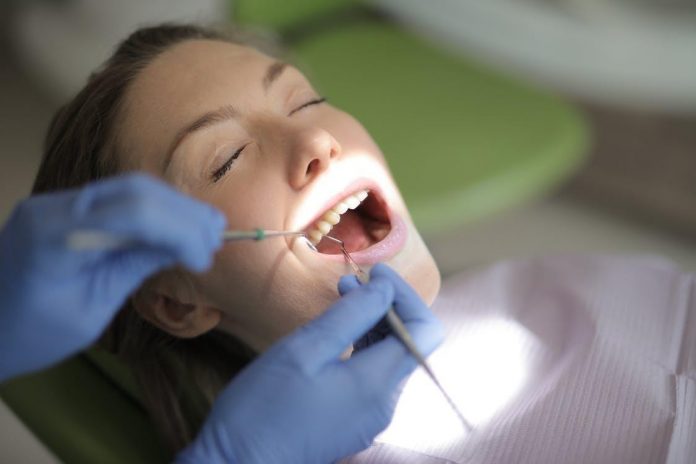
There are roughly 190,000 practicing dentists in the United States. With competition brimming over the cup, and most of the U.S. population considering oral health as a primary necessity of life, providing quality dental services is no longer sufficient in allowing dental practitioners to make their mark on the map.
In a commercial landscape that’s increasingly moving toward digitization, all businesses—no matter what industry they belong to—need to invest in a digital marketing strategy that can help them reach out to customers, attract them, increase their clientele base, and help the business grow. The same holds for dental practitioners.
But this can’t be achieved with just any marketing strategy. Dental practitioners need a cost-effective and result-driven strategy that helps them stay ahead of the competition and establish their dental practice as an industry leader. This is where dental SEO services come in.
Let’s have a look at why dental practitioners need SEO and how their business can benefit by employing desktop and mobile-friendly SEO strategies.
Why does SEO matter for dentists?
Table of Contents
It’s understandable for dental practitioners to rank marketing low on their priority list. However, in a competitive digital landscape where the rampant use of the internet helps customers find the services and products they’re looking for, not investing in a sound SEO strategy can drive your practice into the ground.
Research indicates that 67.6 percent of all clicks come from the top five search engine result rankings. If your website gets SERP ranking that generates enhanced volumes of traffic, it will lead to better leads, generate authority for your dental practice, and affirm the customer’s belief in the quality of your services.
It’s essential to run your business by reminding yourself that your competitors are already investing in SEO for dental practitioners. So why should you deprive yourself of the exposure that SEO can bring in?
Here’s how dental SEO gives your dental practice a fantastic opportunity to get in front of potential patients in your area so you can broaden your reach and convert leads into sales.
It uses relevant keywords
Prospective patients don’t search for dentists. They search fortheir services. From teeth whitening and other cosmetic procedures to root canal extraction, dental SEO helps you use long-tailed keywords that are most often used by customers. It will help you optimize your website for these keywords so that when patients search for these specific services, your website ranks higher than competitors.
It optimizes for local search results
You’re missing prime prospects without SEO. When targeting people who are looking for dental service providers, dental SEO allows you to target specific geographic locations. This makes it more likely for local customers to stumble upon your website and benefit from your services.
It boosts rankings
Attaining a higher rank on search engine results may be hard, but maintaining that rank is even harder. SEO services help you do both. By creating quality content with credible links, SEO for dental services helps you maintain your ranking.
The introduction of mobile SEO
With the increased usage of smartphones over the years to browse the internet, marketing strategies had to adapt to cater to the needs of the ever-growing population of users. This has changed the way patients access information.
When Google announced that mobile searches surpassed desktop searches in 2017, mobile SEO strategies came into being. Effective mobile SEO strategies create a smoother internet experience and fulfill a businesses’ need to retain customers.
Mobile SEO optimizes your website for flawless viewing and functioning on mobile devices, such as tablets and smartphones. This gives rise to browsing customer experience as 51 percent of consumers have reported that they trust mobile-optimized sites more because they reflect the credibility of the brand.
This begs the question: Do dental practitioners need mobile SEO to take their digital marketing strategy to the next level?
Recently, Google rolled out a new mobile search ranking method that places more emphasis on mobile-friendliness while ranking websites in search engine results. With Google holding around 75 percent of search engine market share, dental practitioners can’t afford to miss out on marketing efficiently on such a huge platform.
The difference between desktop and mobile SEO
Thanks to the mobile first-indexing, the search results for mobile and desktop may be similar but not the same. Search engines like Google show results based on the expectations of the user that change according to the device patients are using to search.
Here are some differences between desktop and mobile SEO:
Search results
One of the biggest differences that patients see when searching on mobile and desktop is the size of the text. Mobile text is generally larger and the focus is more on visuals such as images, clips, and videos. In contrast to that, the text appears smaller on desktop searches as the big screen can fit in multiple search results.
The customer experience is also different while conducting searches on mobile and desktop. Mobile users have to swipe up multiple times to go all the way down to the bottom of the first page of search results, whereas desktop users view multiple results on one page without scrolling. As such, mobile users are more likely to choose from the first few search results that appear on top.
Click-through rate
The click-through-rate (CTR) is defined as“the ratio of the users who click on a specific link, compared to the number of total users who view the link.” The click-through rate for mobile users is significantly lesser than desktop users. In fact, the CTR drops for each ranking on mobile searches, making it less likely for patients to click on your website if you appear below five ranks.
In contrast to that, due to the landscape-oriented screen of desktops, search pages have more space for multiple results at the same time, which leads to a higher CTR ratio. However, the CTR for desktop users also falls on the second page of search engine results.
Search layout
Mobile device screens are vertical and smaller compared to desktop screens. This means that search pages and results are laid out differently for mobile and desktop. Mobile search layout often has features that show up differently compared to desktop search layout. Other than that, there are also exclusive features that only show up on mobile searches.
All these differences ultimately impact the search experience of patients and give you valuable insights into creating an effective and comprehensive dental SEO strategy that yields results.
What should dental practitioners do?
Much like businesses across all industries, dental practitioners won’t be able to thrive in a competitive industry if potential patients can’t find them. People don’t buy what they can’t see, and if your practice isn’t on the first page of search engine results, you’re missing out on marketing to a massive chunk of your target audience.
It’s absolutely pertinent for dental practitioners to understand the key differences between mobile and desktop SEO, so they have the best foundation to create an effective dental SEO strategy on both fronts.
Adapting your dental SEO and optimizing your website to respond better on all devices will increase the chances of making your website rank higher on search engine results. This will pull in more traffic from patients that are looking for the dental services you provide and help your practice grow.



















